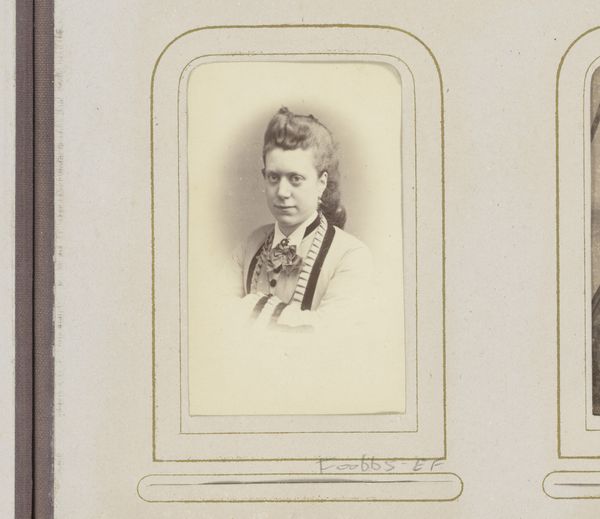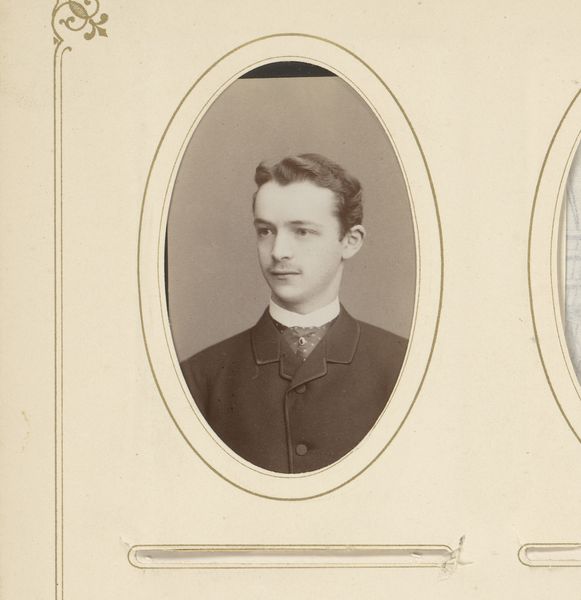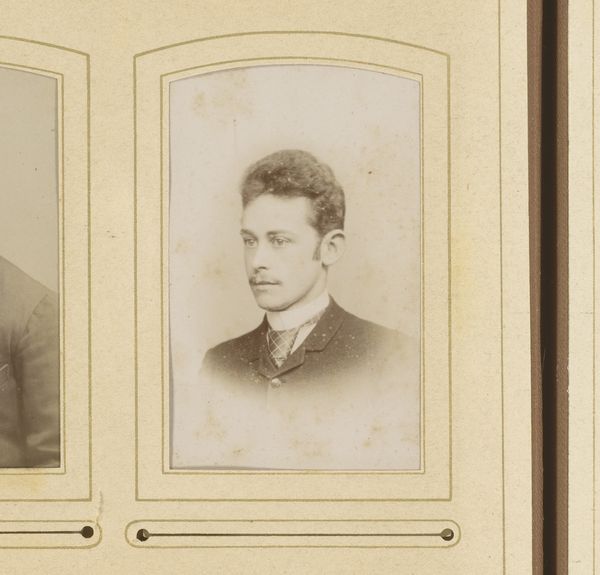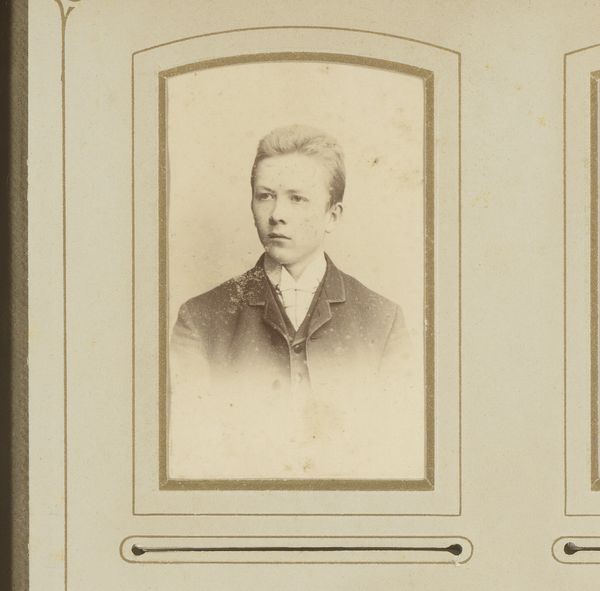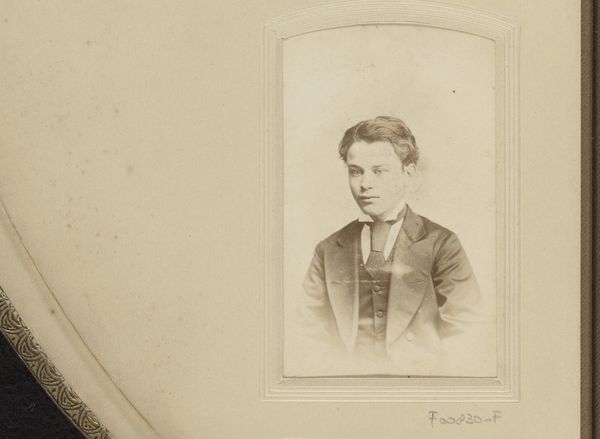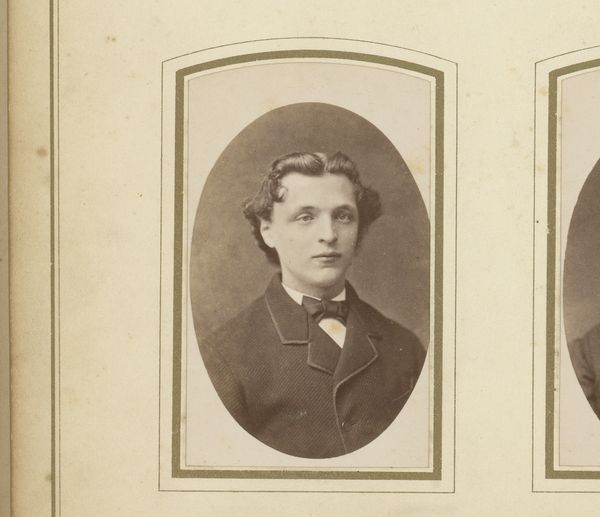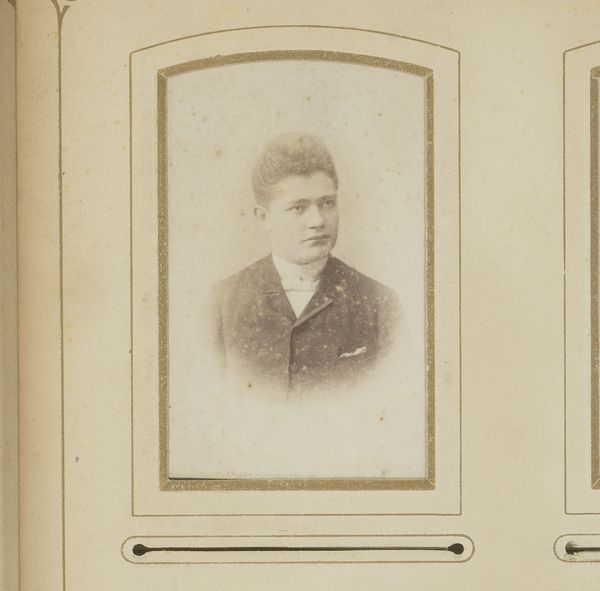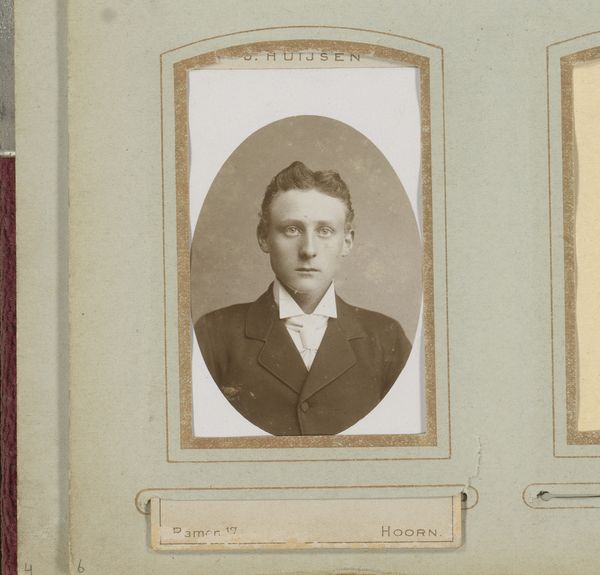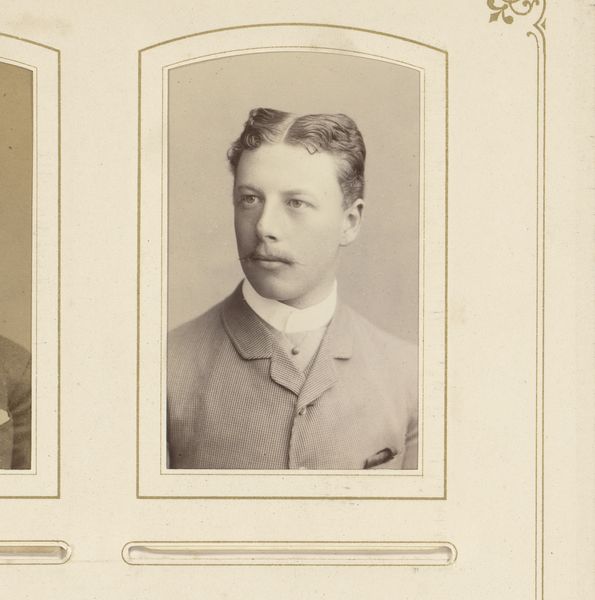
photography, albumen-print
#
portrait
#
photography
#
historical photography
#
19th century
#
albumen-print
Dimensions: height 85 mm, width 51 mm
Copyright: Rijks Museum: Open Domain
Editor: Here we have an albumen print from between 1850 and 1900, titled "Portret van een jonge man, aangeduid als Henry Suchling," or, "Portrait of a young man, referred to as Henry Suchling." There's a certain formality, but something in the young man's eyes makes me wonder what he's thinking. How do you interpret this work? Curator: This photograph offers us a window into 19th-century European societal norms surrounding class, gender, and representation. Consider the context: photographic portraits like this became increasingly accessible to the middle class. How does that accessibility influence the portrayal of identity? Is it truly reflective? Editor: That's an interesting point. I hadn't thought about photography becoming more available impacting how people wanted to be seen. So, in this picture, the subject’s expression… Is it calculated, then? Curator: It could be. Think about how this image may have functioned. Perhaps it was a memento for family, or even for social climbing, presenting a particular image to the world. Does his attire—the suit, the tie—speak to that idea? What does this suggest about the construction of masculinity during this era? Editor: It suggests maybe a rigidity. But there’s also that hint of something else, something less performative, maybe? It feels complicated. Curator: Precisely. These images were both capturing and constructing identities. What appears "real" is inherently shaped by social and cultural forces. How might analyzing such portraits contribute to deconstructing the dominant narratives of the past? Editor: That’s powerful. Looking beyond just aesthetic appreciation opens up so much more! Curator: Indeed! Recognizing the embedded social structures and power dynamics helps us unpack these "simple" portraits.
Comments
No comments
Be the first to comment and join the conversation on the ultimate creative platform.
